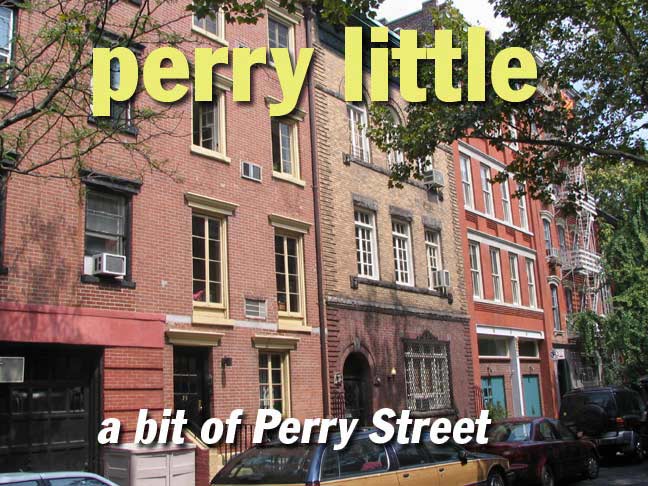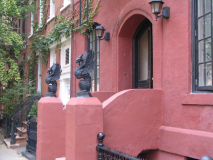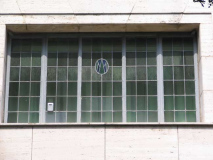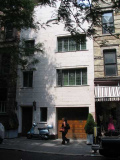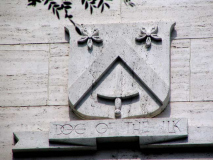
Greenwich Village’s Perry Street is named for US naval hero Commodore Oliver H. Perry, who, after winning the Battle of Lake Erie in the War of 1812, stated “we have met the enemy and he is ours,” later revised by Walt Kelly’s Pogo: “we have met the enemy and he is us.”
Among Perry Street’s famed residents have been Frank Serpico, Margaret Mead, James Agee, Margaret Sanger, andDawn Powell (two separate addresses).
LEFT: Ano 1868, Perry and West 4th Streets
Your webmaster snapped just enough Perry Street images on arecent Greenwich Village hike to form a ForgottenSlice. Like most Greenwich Village streets, architecture textbooks can be written about this street alone.
Dragons guard an adobe-like building front between West 4th and Waverly Place.
A townhouse at #43, built in 1850, was given a radical remake in 1967 with casement-style windows and a bland white front. Could such a radical redo be done today?
By far the most unusual aspect of the renovation…
…is the “coat of arms” at the roofline, showing two flowers, a sword, and the mysterious inscription “Dog of the Ilk.” Can any ForgottenFans explain this one?
ForgottenFan Laura Patterson may have one…
This is what I found at The Doig Family Society: “Earliest Doig Coat of Arms: John Dog of yt Ilk registered a coat of arms in 1468 (Lord Lyon’s records, Ref. FAL224), described as (pic below): Gules, a chevron Argent between two cinquefoils in chief Ermine and a sword erect in base Argent.”
Basically it’s a coat of arms of the Dog, or Doig, family (or ‘ilk’). The Scottish name has various spellings.

Seventh Avenue South was run through Greenwich Village’s unusual angled warren of streets in 1912-1914, creating several sharply angled corners. This slice of a building follows the angle exactly: it is the famed jazz club Village Vanguard, which has been here since 1935. Founder Max Gordon’s name can be seen on the blue street sign. The building itself was constructed in 1921 by developer Morris Weinstein.
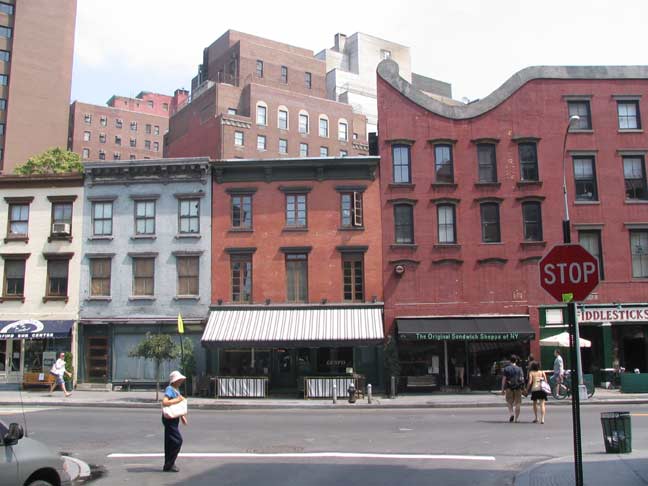
Perry Street’s western end is at Greenwich Avenue, which has been here since the colonial era. It was originally known as Monument Lane, since at its northwestern end there was once a statue honoring General James Wolfe (1727-1759), a hero of the French and Indian War, in which he won the Battle of Quebec only to be shot and killed. The monument disappeared during the Revolutionary War.
If we ignore the buildings in the background and the modern fashions of the people walking in the street, this picture might well have been taken in 1917 or 1927, not 2007.
9/17/07

